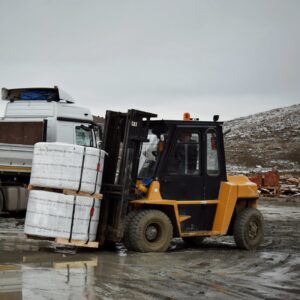Introduction:As winter descends, the challenges for forklift operators multiply, and a proactive approach to weather protection becomes crucial. Trinton Castetter, an expert from Toyota Forklift Trucks, shares valuable insights to help operators, supervisors, and facility managers prepare for the harsh winter conditions ahead. This guide explores forklift weather protection across various facets of operations. Forklift...
Author: flt
Revolutionizing Workplace Safety: The Untold Story of Forklift Operator Training in the UK
Introduction:In the 1960s, the United Kingdom found itself grappling with a lack of skilled workers and a struggling economy. The government’s response was the 1964 Industrial Training Act, a pivotal moment that laid the foundation for the creation of Industrial Training Boards and the birth of an entirely new industry – Fork Truck Training. In...
Forklift Operator Training and Testing
Legislation and Importance of Accreditation: Accrediting Bodies and Training Standards: Re-Training of Forklift Operators: Conclusion:Proper forklift operator training is essential for ensuring workplace safety and complying with regulations. Companies are encouraged to work with accredited training providers, follow established standards, and prioritize re-training to maintain a skilled and safe workforce. Understanding the legislative requirements and...
Lithium-Ion Batteries for Forklift Trucks
Introduction:Lithium-ion batteries have revolutionized energy storage and are increasingly becoming popular for various applications, including forklift trucks. This advanced technology offers several advantages over traditional lead-acid batteries, making it an attractive choice for companies seeking efficiency, reliability, and reduced maintenance. How Lithium-Ion Batteries Work: Advantages of Lithium-Ion over Lead-Acid Batteries: Disadvantages of Lithium-Ion Batteries: Environmental...
Exploring Forklift Attachments: Push Pull and Carpet Boom
Forklift attachments play a crucial role in enhancing the versatility of these material-handling machines. Two notable attachments are the Push Pull and Carpet Boom, each designed for specific applications. Push Pull Attachments: Carpet Boom Attachment: Key Considerations for Forklift Attachments: While forklift attachments enhance functionality, their use requires careful consideration, skillful operation, and adherence to...
Exploring Forklift Attachments: Box Clamps and Fork Rotator
Forklift attachments come in various types, each designed for specific applications to enhance the forklift’s versatility. Two notable attachments are the Box Clamps and Fork Rotator. Box Clamps (Flat Surface Clamps): Fork Rotator: Key Considerations for Forklift Attachments: Incorporating the right forklift attachments contributes to the adaptability of the forklift in various material handling scenarios....
Understanding Forklift Attachments: Sideshift and Paper Roll Clamp
Forklift attachments play a crucial role in enhancing the versatility and functionality of forklift trucks. Among the myriad attachments available, two key ones are the Sideshift and the Paper Roll Clamp. Sideshift/Fork Positioner: Paper Roll Clamp: Considerations for Forklift Attachments: Incorporating the right forklift attachments enhances a forklift’s adaptability to diverse tasks. However, it’s imperative...
Understanding Forklift Mast Assembly, Carriage, and Forks
The forklift mast assembly, fork carriage, and forks constitute the critical components of a forklift truck’s lifting mechanism. Often referred to as “the business end” of the forklift, this section plays a key role in material handling operations. Let’s delve into the components and their functionalities. Forklift Mast Assembly: Types of Masts: Adjustments and Wear:...
Calculating Forklift Lifting Capacity with Extended Load Centre
When the load centre is increased on a forklift truck, it is crucial to recalculate the lifting capacity to ensure safe and efficient operation. The lifting capacity is affected by the load centre distance, and adjusting this distance requires a straightforward calculation. Below is a step-by-step guide to help you determine the new lifting capacity:...
Understanding Forklift Internal Combustion Engines: Diesel, Liquefied Petroleum Gas, and Petrol
Introduction:Forklifts play a vital role in material handling, and their efficiency often depends on the type of internal combustion (I.C.) engine they utilize. In this article, we will explore three types of I.C. engines commonly used in forklift trucks—Diesel engines, Liquefied Petroleum Gas (LPG) engines, and Petrol engines. Conclusion:Forklifts, equipped with internal combustion engines, offer...











